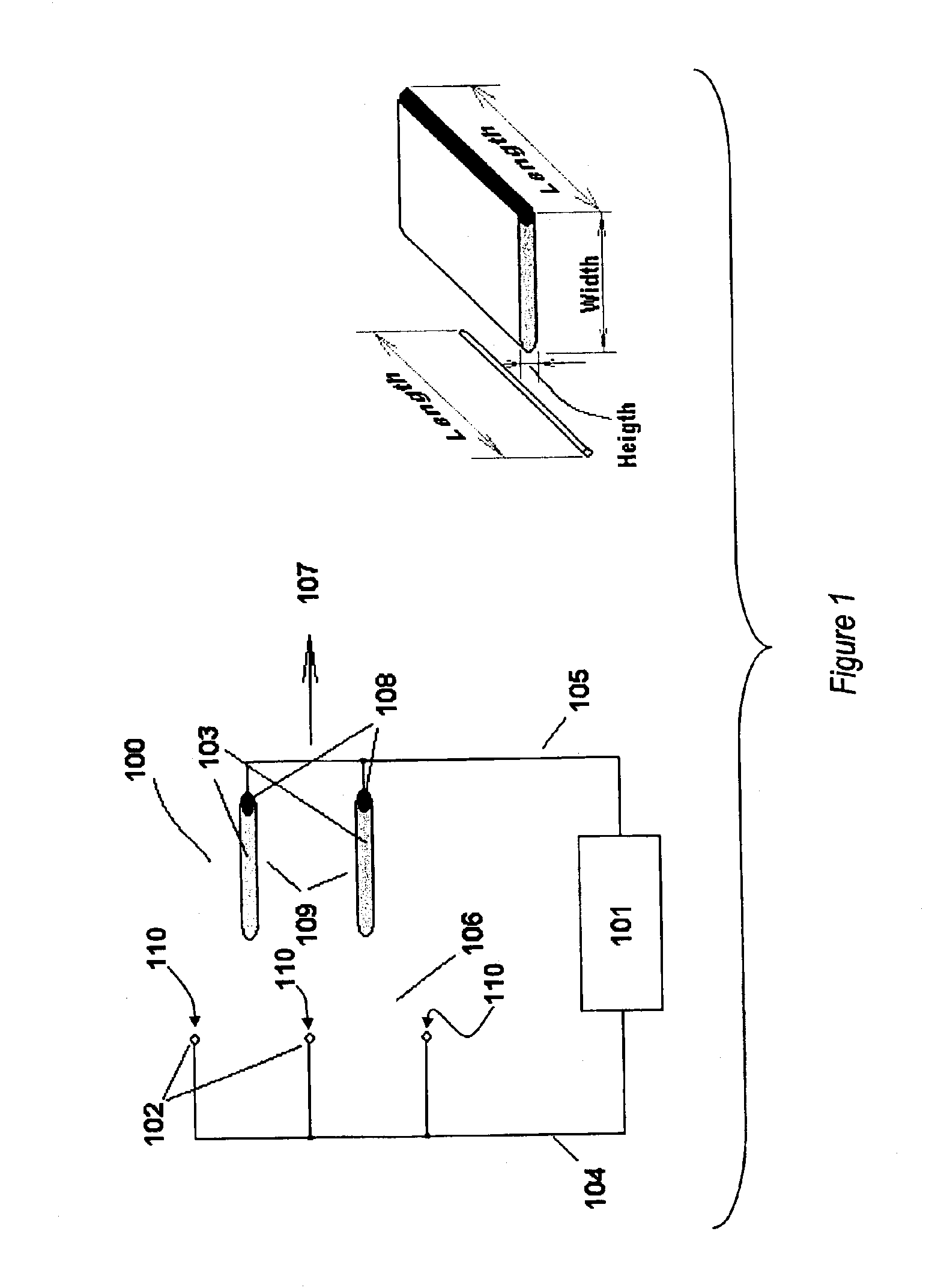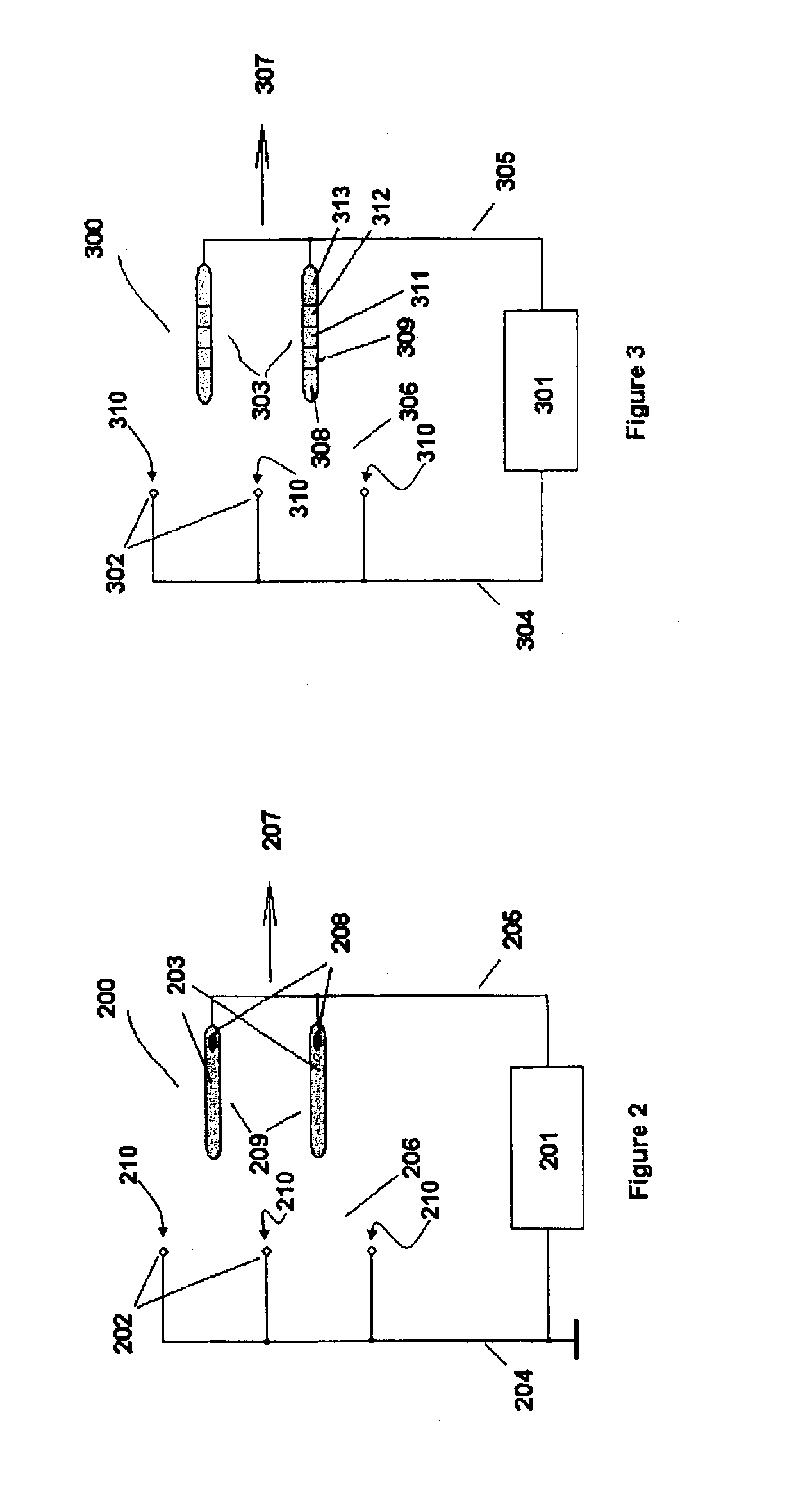Electrostatic fluid accelerator for and method of controlling a fluid flow
a fluid accelerator and electrostatic technology, applied in the direction of plasma technique, oxygen/ozone/oxide/hydroxide, electric supply techniques, etc., can solve the problems of limited ability to produce a substantial fluid flow suitable for commercial use, increased fluid flow resistance, and inability to use physically large electrodes, etc., to achieve increased fluid velocity, improved fluid flow resistance, and improved power handling capability
- Summary
- Abstract
- Description
- Claims
- Application Information
AI Technical Summary
Benefits of technology
Problems solved by technology
Method used
Image
Examples
Embodiment Construction
[0027]FIG. 1 is a schematic diagram of EFA device 100 including wire-like corona electrodes 102 (three are shown for purposes of the present example although other numbers may be included, a typical device having ten or hundreds of electrodes in appropriate arrays to provide a desired performance) and accelerating electrodes 109 (two in the present simplified example). Each of the accelerating electrodes 109 includes a relatively high resistance portion 103 and a low resistance portion 108. High resistance portion portions 103 have a specific resistivity ρ within a range of 10 1 to 109 ′Ω-cm and, more preferably, between 105 and 108 ′Ω-cm with a more preferred range between 106 and 107 ′Ω-cm.
[0028]All the electrodes are shown in cross section. Thus corona electrodes 102 are in the form or shape of thin wires, while accelerating electrodes 109 are in the shape of bars or plates. “Downstream” portions of corona electrodes 102 closest to accelerating electrodes 109 form ionizing edges ...
PUM
 Login to View More
Login to View More Abstract
Description
Claims
Application Information
 Login to View More
Login to View More - R&D
- Intellectual Property
- Life Sciences
- Materials
- Tech Scout
- Unparalleled Data Quality
- Higher Quality Content
- 60% Fewer Hallucinations
Browse by: Latest US Patents, China's latest patents, Technical Efficacy Thesaurus, Application Domain, Technology Topic, Popular Technical Reports.
© 2025 PatSnap. All rights reserved.Legal|Privacy policy|Modern Slavery Act Transparency Statement|Sitemap|About US| Contact US: help@patsnap.com



